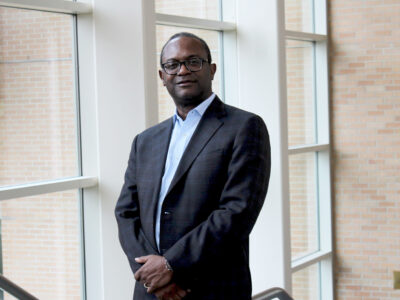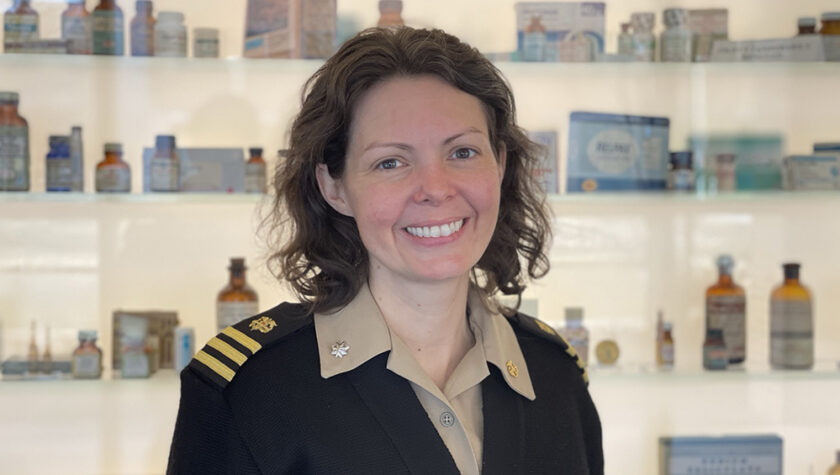
7
March

Alumna Sara Camilli has spent her pharmacy career committed to public health through the U.S. Navy, U.S. Public Health Service, and FDA Division of Pharmacovigilance
By Katie Ginder-Vogel
Sara Lund Camilli (PharmD ’06) grew up in a small town in rural southwest Iowa, excelling in math and science and a desire to pursue a STEM career. She began her undergraduate degree as a chemistry major at Valparaiso University in northwest Indiana, near her extended family. When she realized she didn’t want to work in a chemistry lab, she explored new career options and landed on pharmacy.
“By my junior year, I was ready for a geographic and academic change, so I took the remaining pharmacy school prerequisites and applied to the University of Wisconsin–Madison School of Pharmacy,” she says. “It ended up being a great decision. The School of Pharmacy prepared me well academically as a pharmacist, and I made wonderful lifelong friends.”
As a student, Camilli worked part-time as a de-central pharmacy technician at UW Health, alongside clinical pharmacists.
“That piqued my interest in clinical pharmacy,” Camilli says. “I interned in the PICU (pediatric intensive care unit) the summer after my second year of pharmacy school and took as many clinical pharmacy rotations in my fourth year as I could.”
Her rotations included the neonatal intensive care unit, the operating room, an inpatient transplant unit, and an outpatient movement clinic. That interest grew to take Camilli through a pharmacy career layered with contributions to public health, ranging from practicing pharmacy as an officer in the U.S. Navy to monitoring drug safety nationally as an associate director of the Division of Pharmacovigilance within the U.S. Food and Drug Administration’s Center for Drug Evaluation and Research (CDER).
“I’m proud of the work we do at FDA and my career path so far,” says Camilli.
Serving as a Navy pharmacist
To pay for tuition, Camilli joined the Navy, committing to work as a Navy pharmacist for three years after pharmacy school graduation. The Navy covered about half of her tuition, and Camilli built time in service and accumulated leave while still a student. When she graduated with her PharmD, she received her commission as an officer on the steps of the Wisconsin State Capitol.
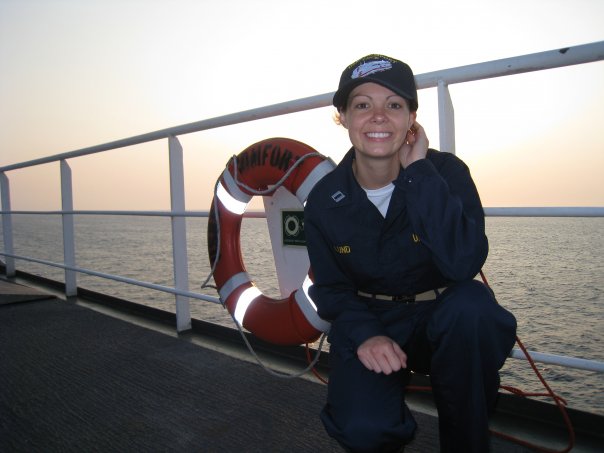
Camilli attended Navy Officer Indoctrination School in Newport, R.I., for six weeks and then received her orders to report to the National Naval Medical Center, now known as Walter Reed National Military Medical Center, in Bethesda, Md.
She jumped into her work. The National Naval Medical Center has a large outpatient and inpatient pharmacy, and Camilli was assigned to the inpatient pharmacy, based on her hospital experience. She was helping manage operations within six months and was in charge within a year.
“As the inpatient pharmacy division officer, I was responsible for managing all inpatient pharmacy operations of the 120-bed hospital and staffed as an inpatient pharmacist,” Camilli says. “I did not deploy as a Navy pharmacist, but I did serve as the pharmacist-in-charge for a training mission on the USNS Comfort, one of the Navy’s hospital ships.”
Continuing to serve
As she concluded her three-year commitment to the Navy, Camilli applied to the U.S. Public Health Service (USPHS) Commissioned Corps and transitioned with only a monthlong break in service. She interviewed for multiple roles at the U.S. Food and Drug Administration (FDA) and commissioned as an active-duty officer in the USPHS. Camilli was drawn to pharmacovigilance at FDA, where she has stayed for nearly 15 years.
“I was ready to focus on my skills as a pharmacist, continue public service, and apply my clinical knowledge in a regulatory setting to impact public health,” she says. “It was a great decision, and I’ve worked in pharmacovigilance at the FDA since 2009. I was a safety evaluator for about four years, a team leader for four years, and have been an associate director since 2018.”
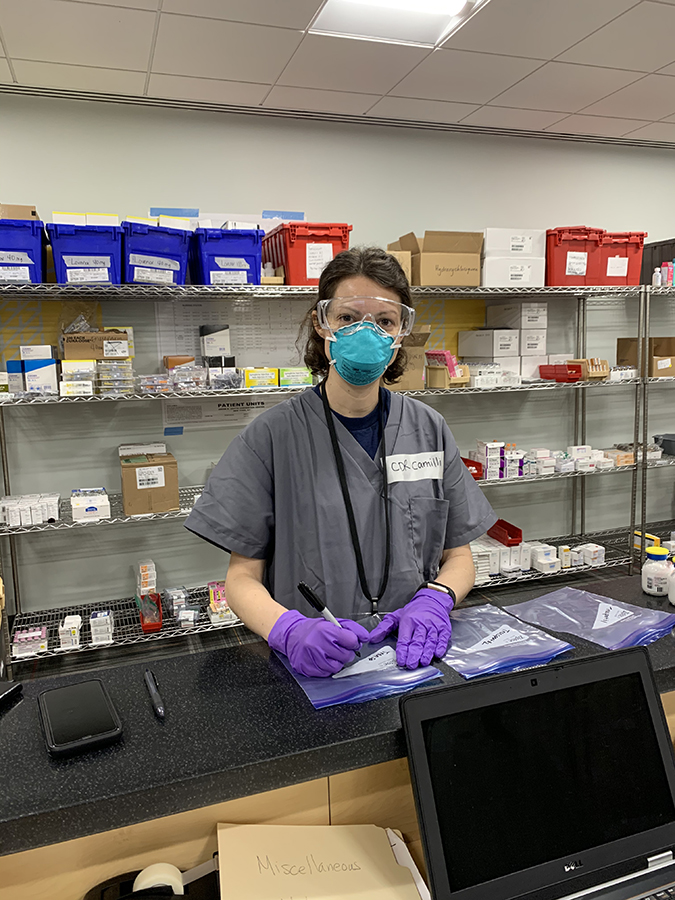
Camilli’s current position includes both her full-time role as an associate director of the Division of Pharmacovigilance within FDA’s CDER, as well as responsibilities as an active-duty officer in the USPHS Commissioned Corps, in which she holds the rank of commander.
“The USPHS is one of the nation’s uniformed services with a mission to protect, promote, and advance the health and safety of the nation,” she says. “I have additional responsibilities as a USPHS officer, including a duty to maintain readiness to deploy as a pharmacist to respond to public health emergencies.”
To maintain such readiness, Camilli is a pharmacist volunteer at a small outpatient pharmacy on an Air Force base and has completed temporary duty assignments at multiple outpatient clinics under the Indian Health Service. She also maintains board certification in pharmacotherapy.
“Over my career, I have deployed to support missions related to domestic hurricane relief and the COVID-19 public health emergency,” Camilli says. “In the early days of the COVID-19 pandemic, I worked as an inpatient pharmacist at a field hospital set up in the Jacob K. Javits Convention Center in NYC.”
Camilli says one of her most memorable days on the job was when she was on temporary assignment as an outpatient pharmacist at the Indian Health Service Peach Springs Health Center in northwest Arizona.
“A nearby health center pharmacy supported a satellite clinic in Supai, Ariz., at the bottom of the Grand Canyon,” Camilli says. “One day I commuted to work via helicopter to the bottom of the Grand Canyon, and we administered influenza vaccines. It was an incredible commute and experience.”
Improving drug safety nationwide
CDER’s Division of Pharmacovigilance helps protect public health by identifying and evaluating post-market safety concerns for drugs and therapeutic biologics and recommending actions to improve patient safety.
“We are a group of about 70 clinical pharmacists and physicians who monitor multiple data sources to detect and critically assess new safety signals for marketed drugs and therapeutic biologics regulated by CDER,” explains Camilli. “One of our primary data sources is spontaneous adverse event reports submitted to FDA by the public via MedWatch or by drug manufacturers, as required by regulation. These adverse event reports are stored in the FDA Adverse Event Reporting System database, also known as FAERS. We receive over 2 million reports a year and apply a risk-based approach to ongoing post-marketing safety surveillance.”
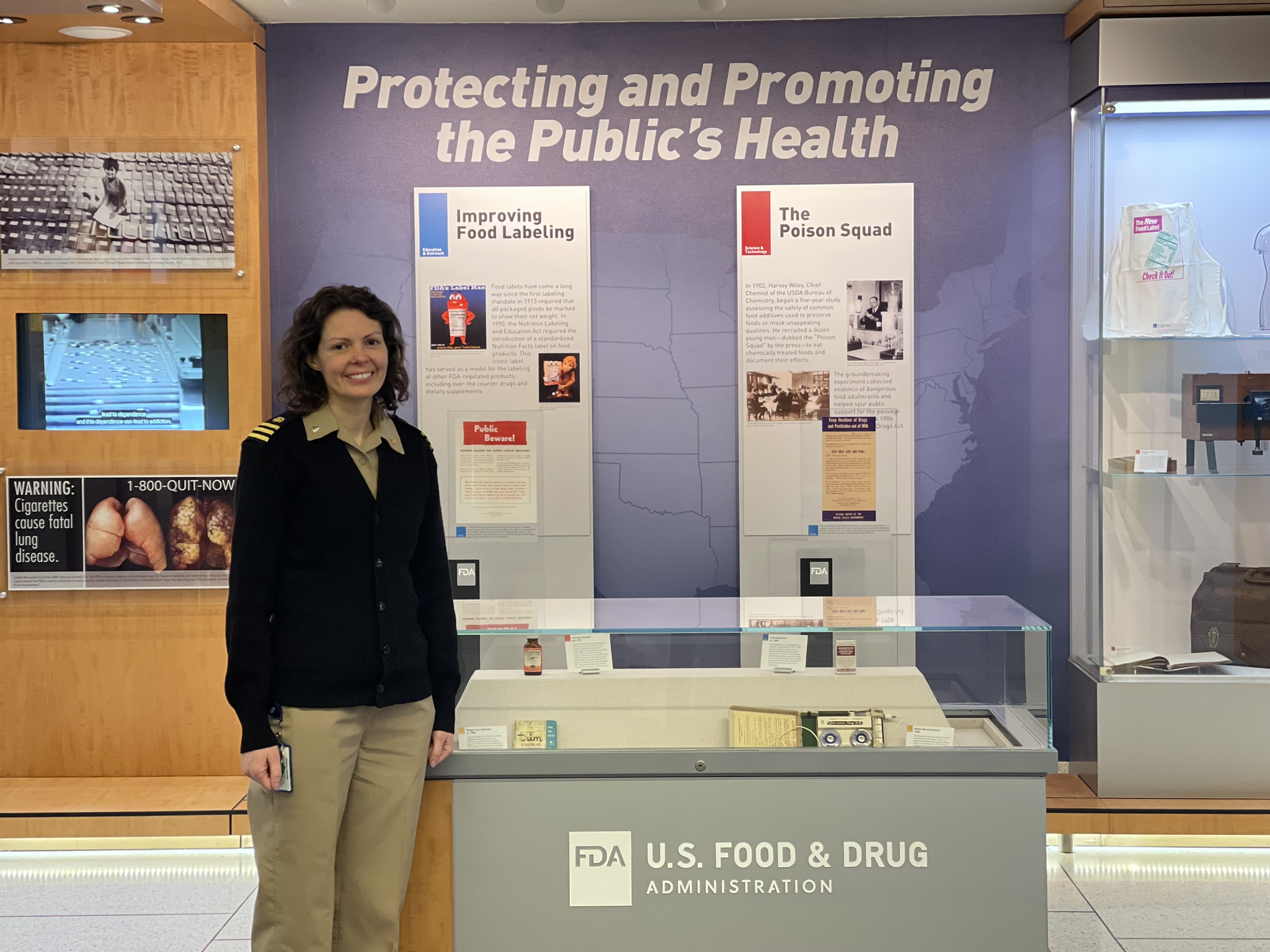
The Division of Pharmacovigilance also monitors published medical literature and other data sources. If they identify a safety signal and determine that further assessment is needed, they complete a multidisciplinary evaluation of data from available sources. If they determine the safety issue is causally related to the drug, they may recommend regulatory action.
Typically, in such instances, FDA requests or requires the drug manufacturer to add safety information to the product labeling, also known as prescribing information, such as a new warning and precaution or an addition to the adverse reactions section. In some instances, FDA will also issue a drug safety or other public communication.
After FDA takes regulatory action, pharmacovigilance staff may publish the safety findings in peer-reviewed medical literature to further communicate the safety information and share the thinking behind the regulatory decision.
As associate director, Camilli guides staff to explore and evaluate safety issues with marketed drug products, envisions and drives process improvements, authors best practices and process guides, and serves as a pharmacovigilance subject matter expert on internal FDA working groups related to post-marketing safety regulation and surveillance. Camilli is the pharmacovigilance lead for the analytical tool used to retrieve and analyze adverse event reports in FAERS.
“I also collaborate with federal partners and foreign regulators, mentor and train staff, and have supervisory administrative responsibilities,” says Camilli. “After 14 years at FDA, I am still learning every day.”
“That decision to apply to the School of Pharmacy and join the Navy got me where I am today.”
—Sara Lund Camilli
She still remembers how peaceful her first days at the FDA were, after working in busy pharmacies.
“I appreciated having time to think critically and dive deep into safety data,” she says. “I also remember the awe of being surrounded by smart, accomplished health care professionals, all working to protect public health.”
While wearing so many hats — officer, full-time FDA employee, spouse, parent, and outpatient pharmacist — can feel overwhelming from time to time, she knows she’s made the right decisions for herself since pharmacy school.
“That decision to apply to the School of Pharmacy and join the Navy got me where I am today,” she says. “I’ll reach 20 years of uniformed service this summer, and I’m starting to think about what’s next.”




